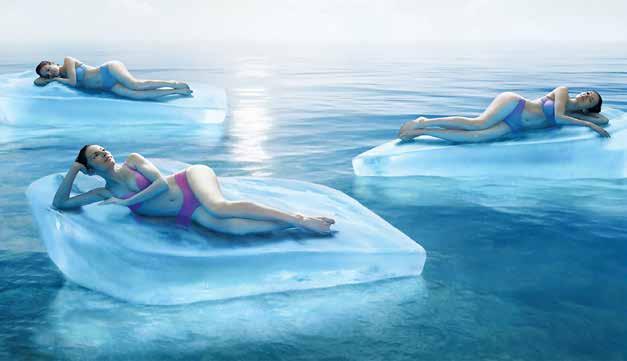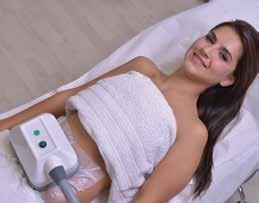
6 minute read
Ask the Experts
the EXPERTS ask

Advertisement
Our beauty industry experts answer questions about every aspect of running a successful salon or spa business.
I’m thinking of incorporating CBD products into my salon offering but want to make sure that CBD is a legal substance before committing.
Known for its holistic health benefits, cannabis has certainly become a game changer in this dynamic industry. With a wide array of suppliers rapidly entering the South African market, it is vital that you do your homework before stocking cannabis products. Certain local and imported items carry the risk of being removed from our shelves due to legal non-compliance. Cannabis contains over 113 cannabinoids, responsible for an array of therapeutic benefits. CBD (Cannabidiol) and THC (Tetrahydrocannabinol) are the most well-studied, with THC being the psychostimulant cannabinoid.
Hemp is a member of the Cannabis sativa family and is cultivated for non-drug use. It contains less than 0.3% of THC. Therefore, hemp-derived products are non-intoxicating and will not impair your mental clarity.
Marijuana can be a member of both the Cannabis sativa or Cannabis indica family and is cultivated for recreational and medicinal use. It typically contains high levels of THC, ranging from 5 - 35%.
Legislation In recent years, many parts of the world have started adopting laws broadly legalising cannabis, ranging from decriminalisation to legalisation for recreational purposes. So, where does this leave us in South Africa? Prior to 23 May 2019, CBD was classified in terms of the Medicines and Related Substances Act 101 of 1965 (Medicines Act) as either a Schedule 4 or Schedule 7 medicine. As a result of the good safety profile of a low dose of CBD, the Minister of Health subsequently ruled that CBD products with a maximum daily dose of 20mg per day and an accepted low risk claim and health benefit will be excluded from Schedule 4. CBD products should also contain less than 0.001% THC (Government Notice No R756, Government Gazette No. 42477). Only products that meet these specifications are currently permitted for use in South Africa. Cannabis laws differ between countries and what is legal abroad may not necessarily be permitted in South Africa. The USA, for example, is allowed to distribute CBD products with THC concentrations of up to 0.3%. Many suppliers import these products, assuming they are legal in South Africa, hence imparting a risk onto the local businesses that purchase it. The source of the product is critical – you need to ensure that CBD products are hemp-derived, and that growers have the necessary licenses in place. To ensure safety, check that the products have been manufactured in a GMP compliant facility and that all the necessary tests have been conducted. Ensure the dosages and strengths are clearly indicated. If travelling, check whether CBD is legal in your country of destination. Most often it is marijuana that is prohibited and not CBD.
Rest assured, CBD is not ‘dagga’ – so source your CBD responsibly and experience its holistic benefits.
Head of sales at Goodleaf, René Moodley is a biochemist with over 18 years of experience within the nutritional, scientific and biotechnology industries. For the past 15 years, Moodley has worked internationally in sales, business development, strategy and market research.
rene@goodleaf.co.za
What exactly is cryolipolysis and how does it work?
The story of how cryolipolysis became a preferred method for non-invasive fat removal is a rather peculiar one. Who would have thought that kids eating too many popsicles could lead to an advancement in the medical sciences!? Well, in the 1970s, Epstein and Oren reported fat necrosis in the cheek of an infant after sucking on a popsicle! Studies revealed that it caused inflammation of the fat cells in the cheeks, which resulted in them dissolving with time.
In 2007, Doctors Anderson and Manstein from Harvard University did further work and the ‘popsicle panniculitis’ phenomenon paved the way for what we now know as cryolipolysis (or fat freezing), which they developed. The two doctors published their first clinical reports of successfully removing ‘love handles’ with fat freezing and received FDA (US Federal Drug Administration) approval for this method in 2010. Subsequent approval was obtained for various other parts of the body, including abdomen, back bra strap area, inner and outer thighs, and under the buttock cheek, as well as underarms and submental.
The physiological basis for this treatment is simple; selective extraction of heat from adipocytes in subcutaneous tissue for an extended period results in immediate fat cell demise and gradual apoptosis (a natural controlled cell death). Lipids from the fat cells are slowly released and transported to the lymphatic system to be processed and eliminated. This is a very important point to be highlighted when educating potential patients considering this treatment method. Ideal candidates are patients who follow a healthy diet, who exercise and who would like to improve their body shape by eliminating stubborn localised pockets of fat. treatment cups, where the cooling plates are situated. Good contact is required for efficient cooling, therefore a variety of different sized handles are available, and a qualified therapist will be able to secure the handles comfortably to the treatment area. A quality machine will offer an initial period of skin warming before the cooling starts. This increases patient comfort significantly, and the machine should also have an emergency stop button for the patient to use when they feel they need it. Depending on the thickness of the fat layer, treatment settings can be adjusted between 0 and -15 Celsius, and from 30 to 60 minutes, followed by manual massage. Results for the area will become visible after six to eight weeks and a repeat treatment can be scheduled after 45 days if required. Optimal results are visible between three and six months. The treatment is described as comfortable, especially once the initial tugging sensation caused by tissue being drawn into the applicator is relieved by the cooling of the area. Patients can return to normal activities directly after treatment and minimal side-effects have been reported. PB Ideal candidates are patients who follow a healthy diet, who exercise and who would like to improve their body shape by eliminating stubborn localised pockets of fat.

How does it work? Numerous types of machines are available, some combining technologies like radiofrequency or ultrasound cavitation, others using only cryolipolysis technology via either two or four treatment handles. A vacuum is used to suction the skin and subcutaneous fat layer into the
Dr Andrea Botha (M Tech Chiro), who has a special interest in the aesthetic field, is a founding member of Aesthetic Machine Supply based in La Lucia Durban, providing general practitioners and somatologists with quality equipment, support and education.
andrea@beautymachines.co.za



Aesthetic Machine Supply provides quality electro-medical devices tailor-made for the beauty industry, at competitive prices. Our market leading systems have been designed to address most common aesthetic issues using pain-free methods. We provide each customer with exactly what they need for their particular space and unique business needs, including fi nance options. We offer specialist training, advice and support to complement the different systems.










